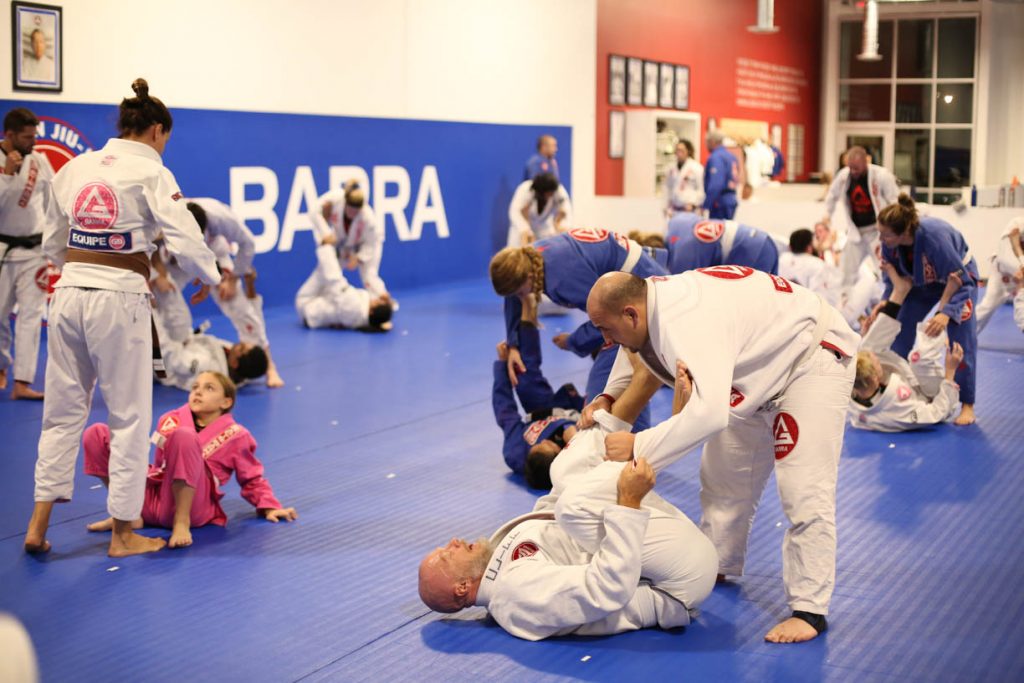What Should Each Color Belt Focus On?

Jiu-jitsu students who want to level up in their skill will often ask their instructor “What should I be working on in my game?”
Of course individual games vary according to body type, physical attributes and personal preference and a jiu-jitsu student’s individual strengths and weaknesses must be considered. As importantly, a students belt level – or more generally, level of experience – is a factor in determining an area of focus for a student of jiu-jitsu.
Here are a few ideas of what different belt levels may be focusing on in their development.
White belt is largely the belt of acquiring the basic techniques. The white belt should be focused on learning the best, basic techniques for each of the major ground positions so they have an option and know what to do when they get in any position in the course of a match.
Secondly, the white belt student will spend a lot of their training time working on the correct mechanics for those basic techniques. Each technique has important details that must be learned in order for it to be tight enough to actually work on a fully resisting opponent.
The blue belt should have a knowledge of what to do in each of the major ground positions and be able to perform the basic techniques in live rolling. They know a handful of techniques for each situation and can roll productively without resorting to pure strength or reverting to instinct.
Blue belts will open up their study of more advanced positions and experiment with different guards and passing styles. This is a time when many blue belts will try and add many new positions to their game, significantly expanding their vocabulary of techniques.
This is a great time to try all of those different open guard styles for example: De la Riva guard, Spider guard, Butterflyguard and so on.
The purple belt marks a different stage of learning in the jiu-jitsu students journey. By the time one reaches purple belt, there are few completely new techniques to be added. They won’t often show up to class and see something that they have never seen before. The experienced purple belt does not progress by adding yet even more techniques. Instead they begin to solidify their games and focus on specific areas.
Many purple belts I’ve seen will shift their focus to:
A) Correcting holes in their game. You may get through the first few years of bjj by only playing bottom game or conversely preferring to fight from top, but by purple belt one should be aware of weak areas and set about correcting them. There should be a balance between your top and bottom games. Can you imagine a legitimate black belt with no guard game or non existent takedowns? Better fill in those gaps now.
B) Developing that A Game. I heard one instructor say that many purple belts have a favorite area of their game that may well be at a black belt level. Purple belt is a great period to set aside techniques / positions that don’t seem to work as well and really sharpen your best positions. For periods of months, the purple belt will concentrate their efforts on their best positions to make those positions so strong that higher belts will be threatened by them.
The brown belt has a more mature perspective on jiu-jitsu and the things that separates them from the coveted black belt are the intangibles of timing, sensitivity, anticipation and feel. The right move executed with precision at the exact right time is how the brown belt gets ahead of the purple belt – even when both purple and brown know the same techniques.
The brown belt seeks refinement and “addition by subtraction” in discarding the non-essential.
Your own instructor may have different ideas on what the various jiu-jitsu belts should be working on.
What is your belt and what are you working on now in your training?
See also on Gracie Barra : Stop Getting Tapped Out!
Credits: Mark Mullen
Gracie Barra Black belt based in Asia
FB: facebook.com/markmullenbjj
